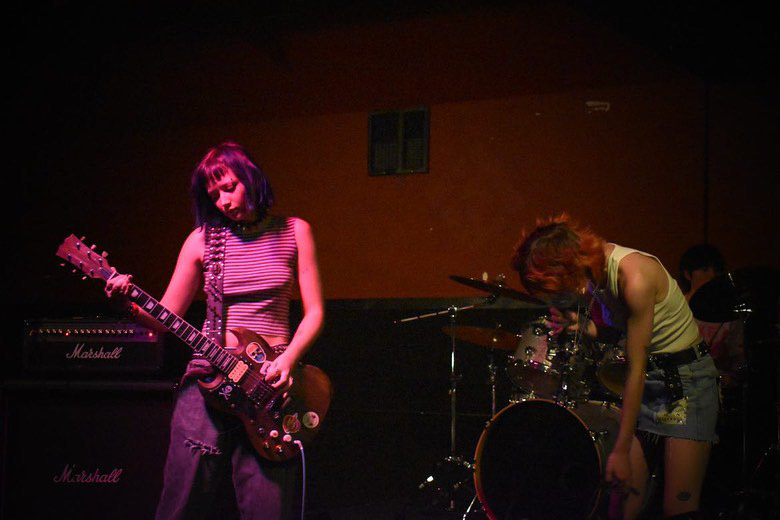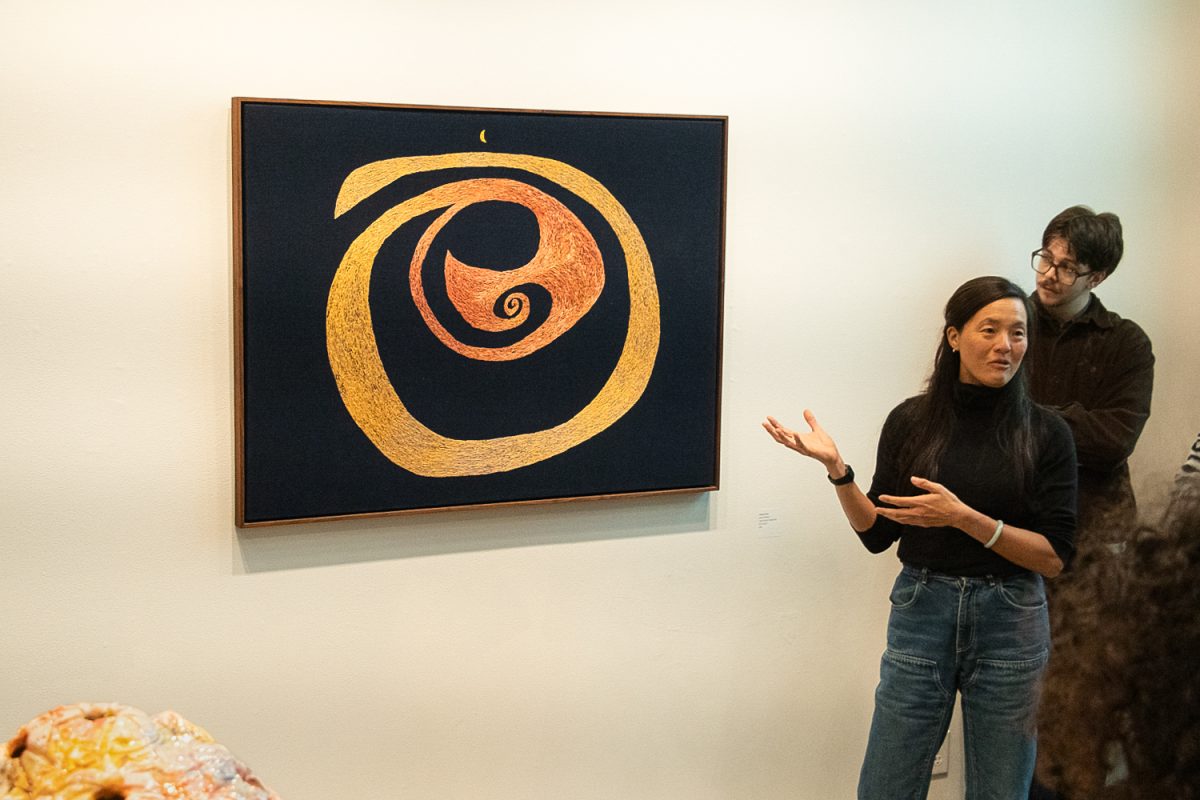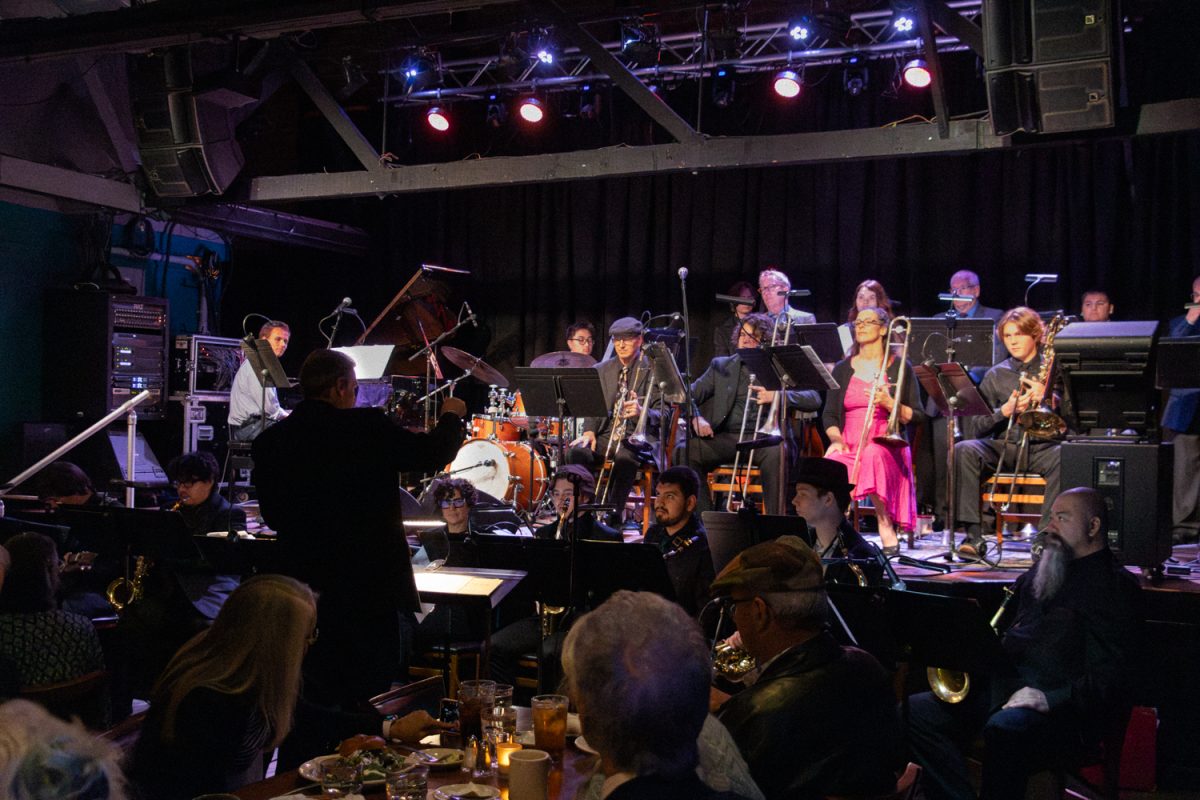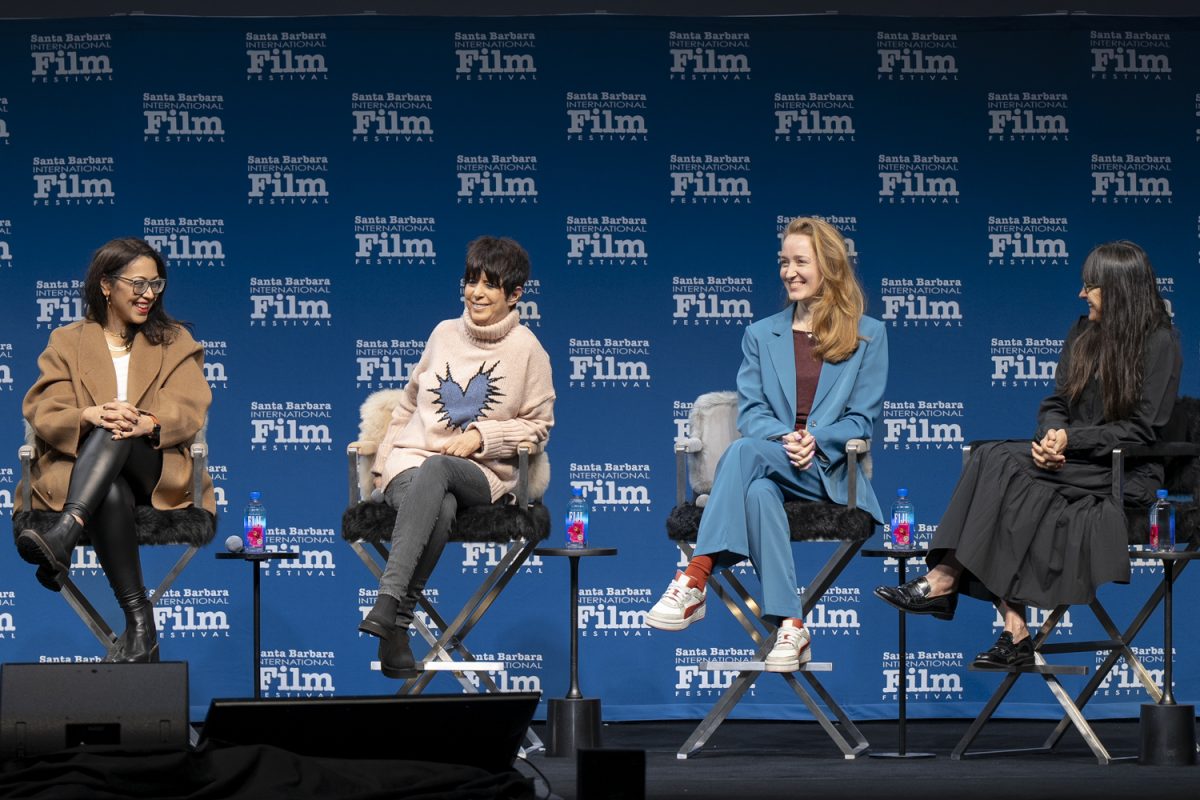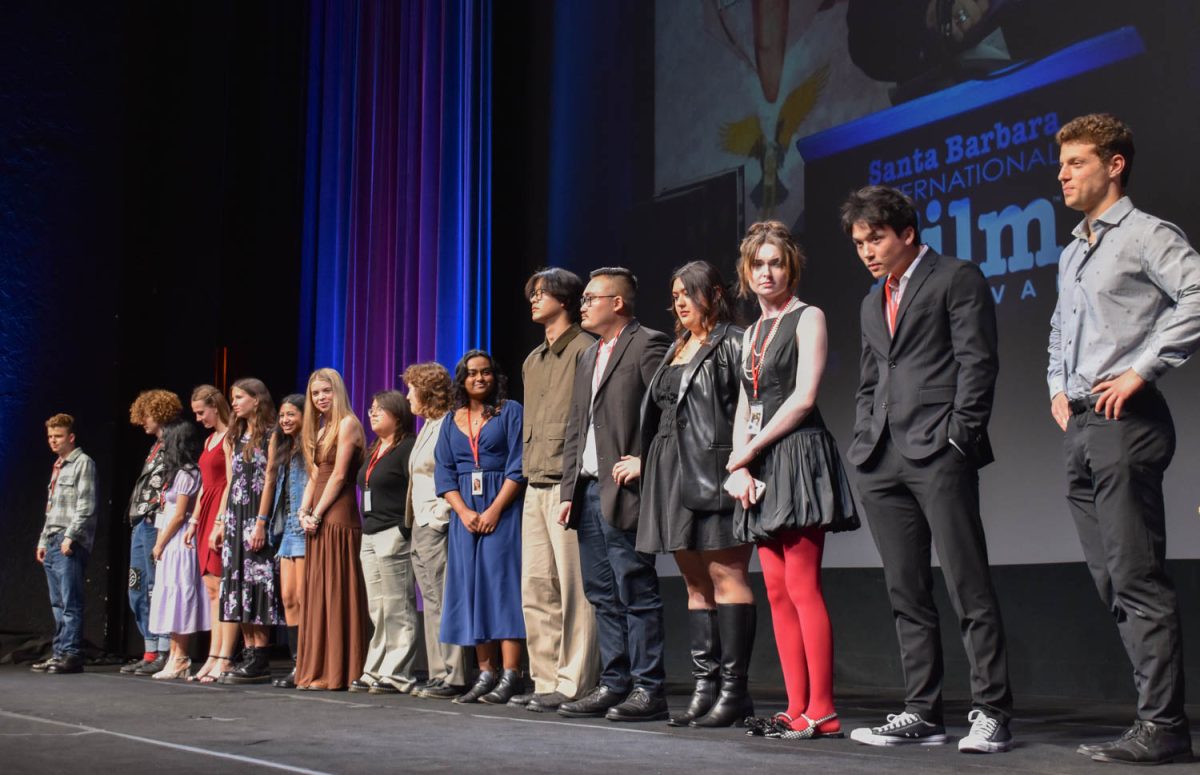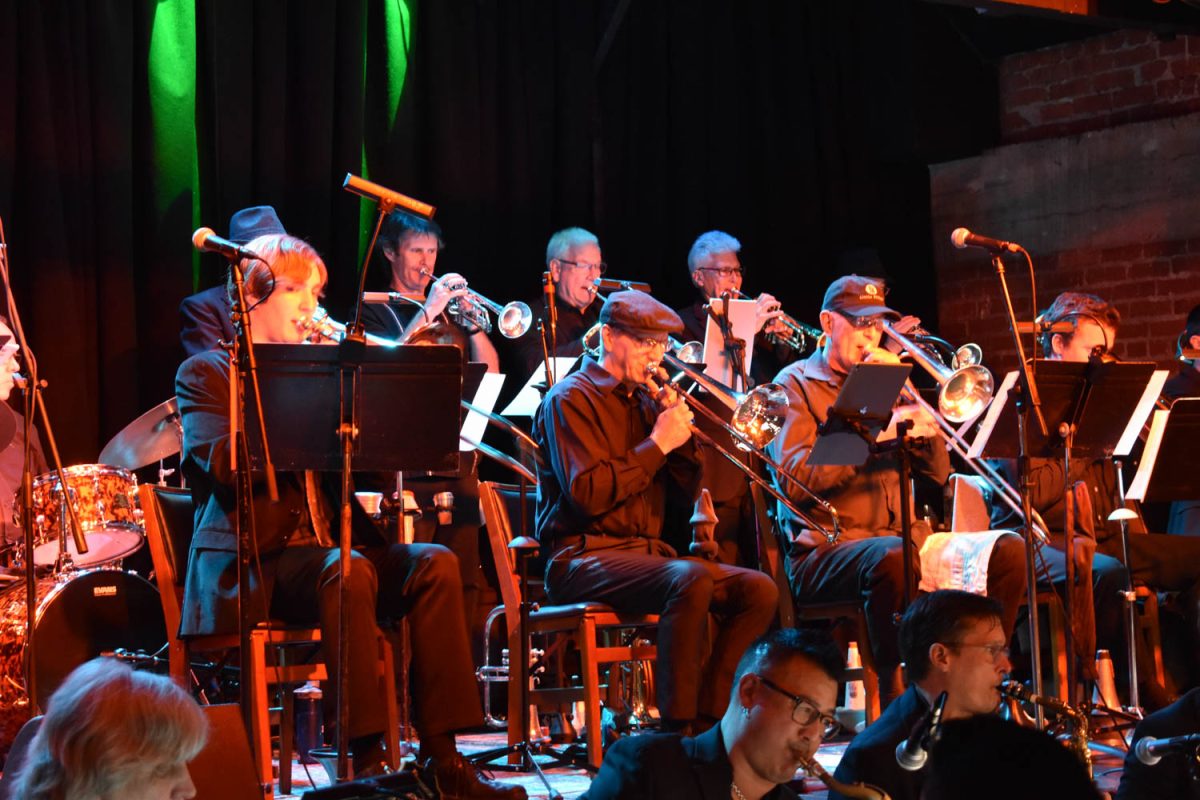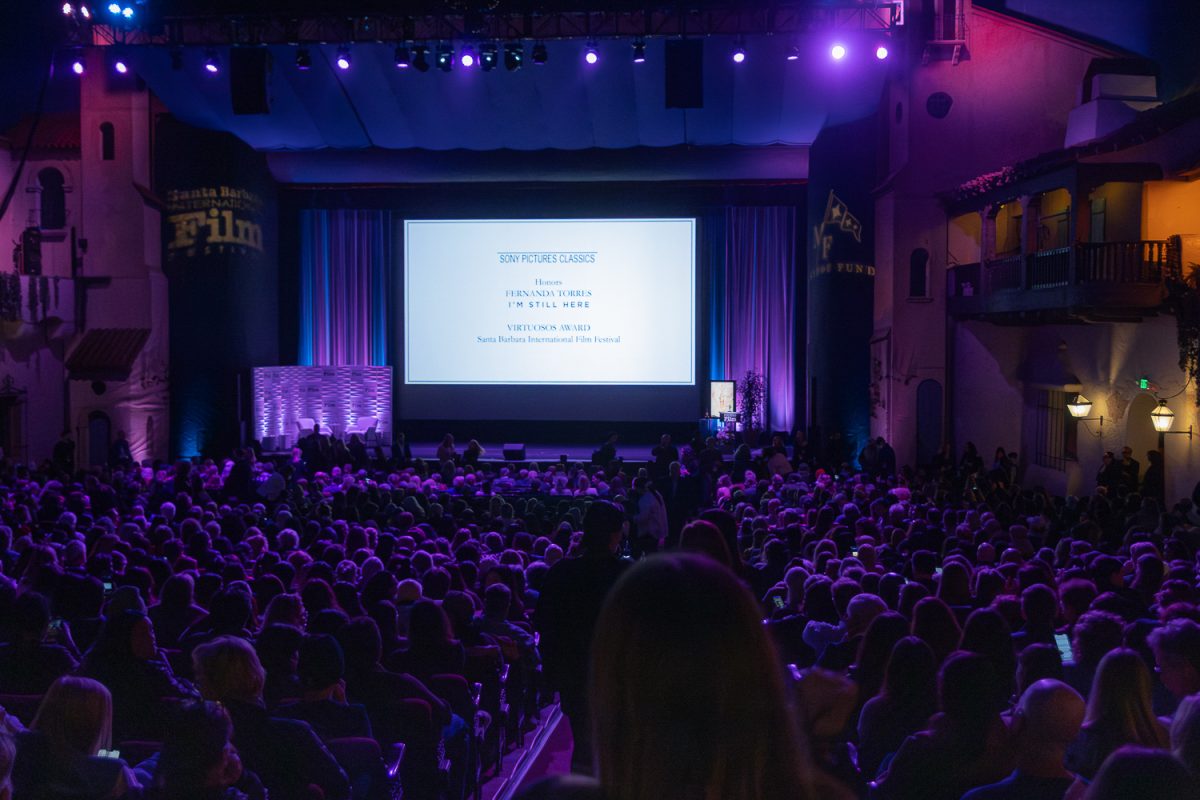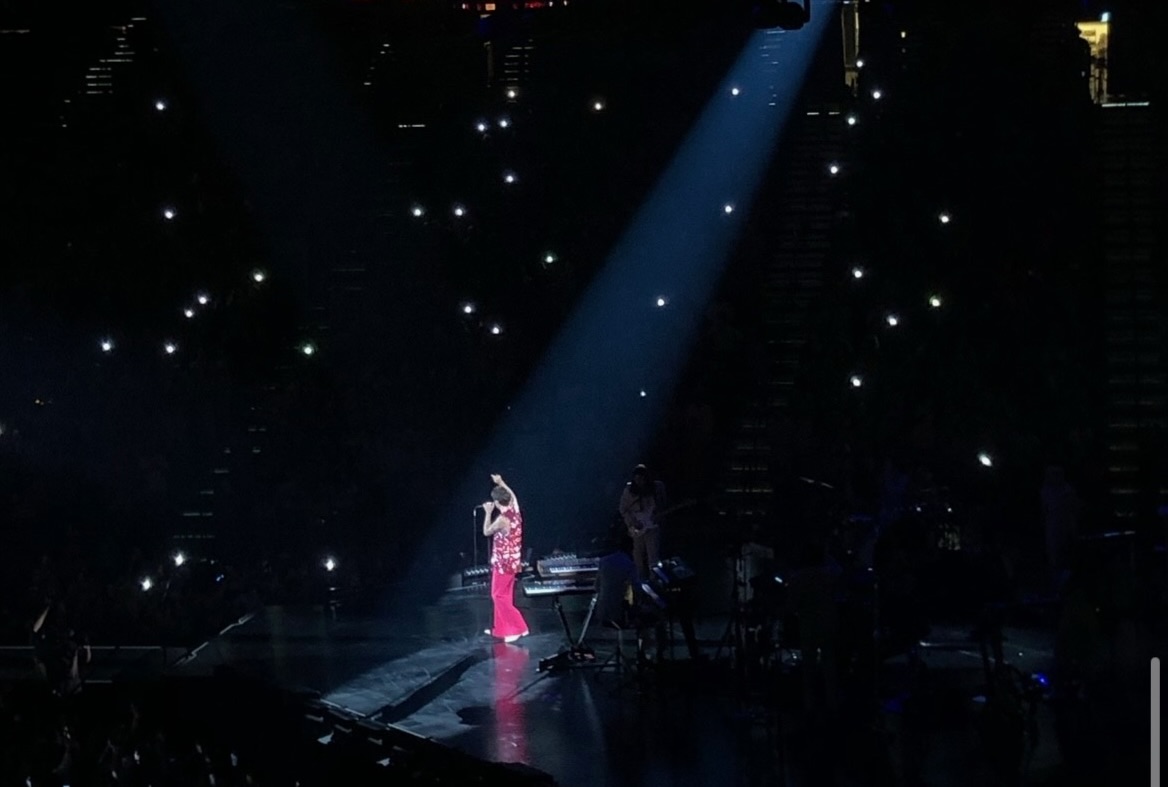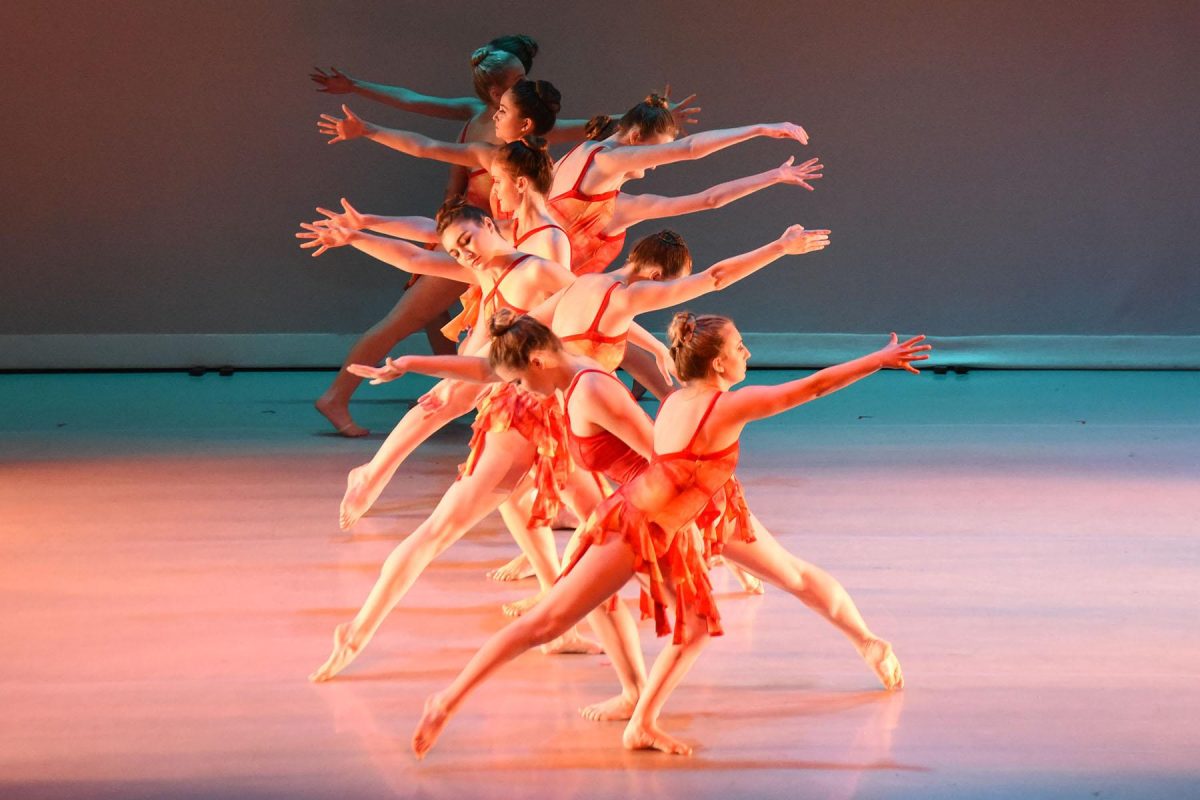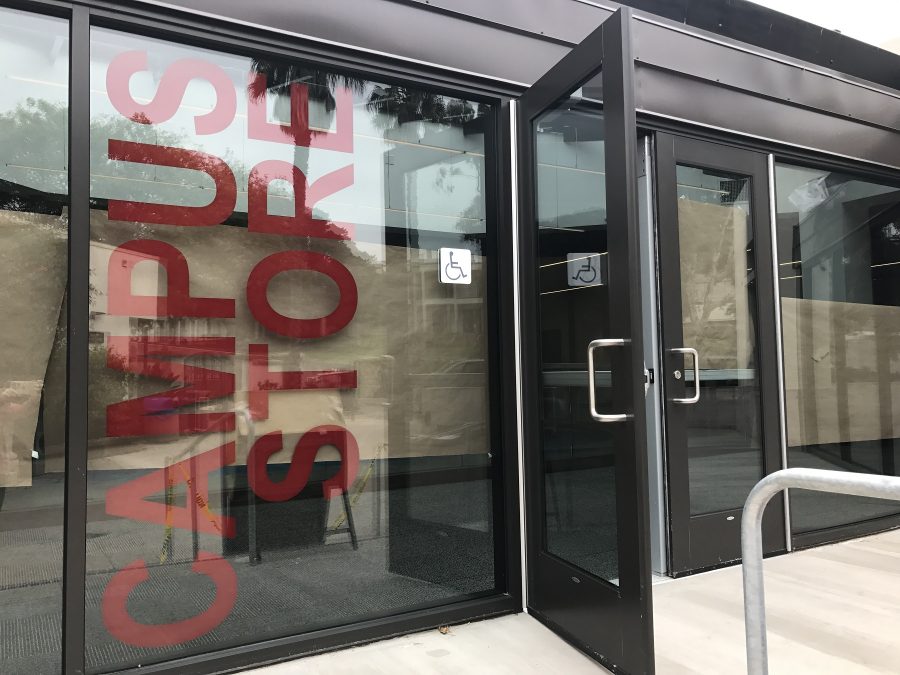The formal abstract artist, Rebecca Morris, is a fanatic about empty space and organic shapes.
Her City College lecture Friday night started off unlike her others. “I got sick of my old lectures and going in chronological order,” said Morris. “I wanted a more authentic way to communicate about my art —and making art is not a linear process.”
Considering herself a field-based artist, Morris likes the idea of shapes in space with a foreground and middleground interconnecting.
Her random patterns and lines aren’t so random after all. A clear, methodical approach is the aim of her trajectory.
“I like using symmetry to organize chaos,” said Morris. “Isolated shapes with field grounding behind them is what I enjoy.”
Her unorthodox style and modern methods evolved during her year spent in Germany, where she says she was “re-educated” about art. With abstractionism being one of the first art movements in America, a European perspective had not yet been seen nor studied by the young Morris.
Born in Connecticut but raised in Chicago gave the visionary artist a metropolitan view of life in just the right dose.
In 2005, Morris’ time in Germany was primarily focused on working in her studio. The previous tenant had left tons of triangular cardboard pieces lying around the place. Morris automatically thought to paint on them.
What started as a light bulb idea gave the imaginative artist the abstractionism she was craving. By deciding to paint on these obscurely shaped cardboard blocks she subconsciously revolutionized the intent of her work.
Fred Sandback, the conceptual-based New York artist was a huge inspiration for Morris. Sandback’s work was presented in an exhibit seen by Morris that really shaped her realm of perspective. By using acrylic yarn to emulate sculptures and visual conceptions, the artist created an original identity for his work.
Morris’ art started in the 90s but from her mid-20s to 30s, her notion on life changed, as well as her approach to new pieces.
Her focus on formal shifts in her paintings and promise to never use a ruler to measure lines are only two of the many things separating her work’s identity into its own category.
Even though her paintings and mediums have developed over time, her work is still recognizable to her followers.
“I still see a connection in my interests,” said Morris.
When asked about why she moved to Los Angeles from the infamous windy city, she replied with, “I caravanned across the country with a bunch of friends, I didn’t have a boyfriend, and I was like—why not, I just have a cat.”
The bright colors and use of wild ideas come together to form some of her most widely- recognized pieces. Her range of hot pink acrylics and muted brown watercolors somehow connect in a harmonious relationship with the use of gold and white spray paints.
Her quirky personality and humble spirit were both vividly seen in her lecture. With her husband sitting in the third row and her fans a few rows behind, the atmosphere was lively and unexpected.
Morris has been featured in museums and galleries across the world, but her favorite thing is much more simplistic.
“I love seeing artwork in a domestic setting,” said Morris. “For someone to want to look at it every day and be in a daily existence with a work of art, well that’s the nicest thing that could happen.”



